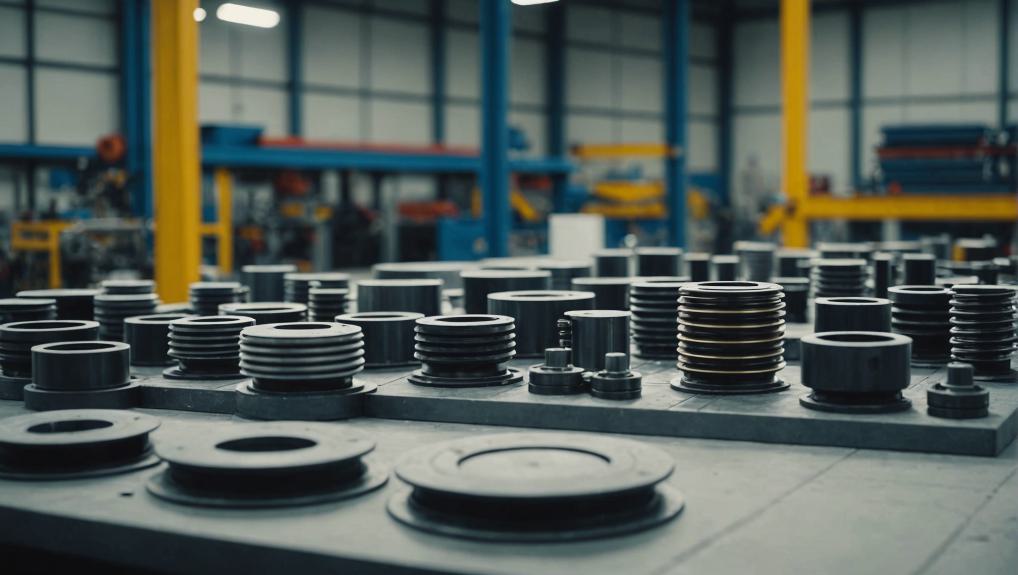
When you're dealing with custom fabricated industrial expansion joints, you need to focus on three pivotal aspects to guarantee their efficiency and longevity. First, you've got to assess material compatibility with the environmental conditions; this choice can make or break the joint's performance. Then, precision in your design specifications isn't just beneficial—it's essential. Each joint must be tailored specifically to meet its operational demands. Finally, don't overlook the importance of stringent quality control protocols. These are not mere formalities; they are your assurance that each joint will perform as expected. Curious about how these tips can transform your approach? Let's explore how each element plays a significant role in the lifecycle of expansion joints.
Assessing Material Compatibility
When selecting materials for industrial expansion joints, it's essential to verify they're compatible with the environmental conditions and media they'll encounter. You're dealing with variables such as temperature extremes, corrosive substances, and physical wear that can dramatically affect the durability and functionality of your joints.
You should start by identifying all the environmental factors at the installation site. Are there high temperatures or potentially corrosive chemicals involved? What's the range of pressure the joints will face? This initial step is vital because each material reacts differently under various conditions. For instance, stainless steel might be perfect for high-temperature applications, but it could fail if exposed to certain corrosive chemicals.
Next, consider the media that will pass through the joints. If you're handling oils, gases, or acidic solutions, you'll need materials specifically suited for these substances. Compatibility charts are invaluable here, offering a quick reference to determine which materials will resist the media's effects without degradation.
Precision in Design Specifications
You must guarantee precise accuracy in design specifications to maximize the performance and longevity of industrial expansion joints. Precision in design not only guarantees proper function but also prevents premature failure, which can be costly and dangerous.
To achieve this, focus on key aspects of design accuracy:
- Detailed Measurements: Every dimension must be accurately measured and recorded. Even minor discrepancies can lead to significant issues in alignment and overall functionality. Make sure you're double-checking measurements against initial requirements.
- Material Specification: Be exact about the materials used. Different environments and operational demands necessitate specific material properties to handle stress, temperature, and chemical exposure effectively.
- Operational Conditions: Clearly define the operating conditions the joints will face. This includes pressure ranges, temperatures, and motion dynamics. These factors dictate the design tolerances and resilience needed.
- Customization Needs: Tailor each joint to its specific application. This might involve unique shapes, sizes, or flexibility requirements. Customizing ensures that each joint not only fits perfectly but also performs optimally under the specific conditions it will encounter.
Quality Control Protocols
Implementing rigorous quality control protocols is essential to guarantee each industrial expansion joint meets the highest standards of reliability and performance. As you develop these protocols, start by defining clear, measurable criteria that each joint must meet before it's considered complete. This might include specific dimensions, resistance levels, and material properties.
Next, integrate step-by-step inspections throughout the manufacturing process. Don't wait until the final product is assembled to check for compliance. Instead, inspect materials as soon as they arrive, monitor them during fabrication, and review the finished joints before they're shipped. This approach helps you catch issues early, saving you time and money.
It's also important that you keep detailed records of every inspection and test result. This documentation isn't just for maintaining standards within your operations; it's essential for compliance with industry regulations and for future audits. Make sure your team is trained to understand and implement these protocols consistently.
Lastly, don't overlook the importance of feedback loops in your quality control process. Regularly review and refine your protocols based on real-world performance data and client feedback. This continuous improvement will ensure your expansion joints always meet the evolving needs of the industry.
Conclusion
To summarize, you'll see the best performance from your custom fabricated industrial expansion joints by strictly following these three tips.
First, guarantee the materials you select are compatible with your environmental conditions and operational demands.
Next, tailor your design specifications meticulously to fit your specific needs.
Lastly, don't underestimate the power of rigorous quality control protocols to maintain reliability and extend the lifespan of your joints.
By implementing these strategies, you'll maximize efficiency and effectiveness in your systems.
© Copyright 2024. All RIghts Reserved
